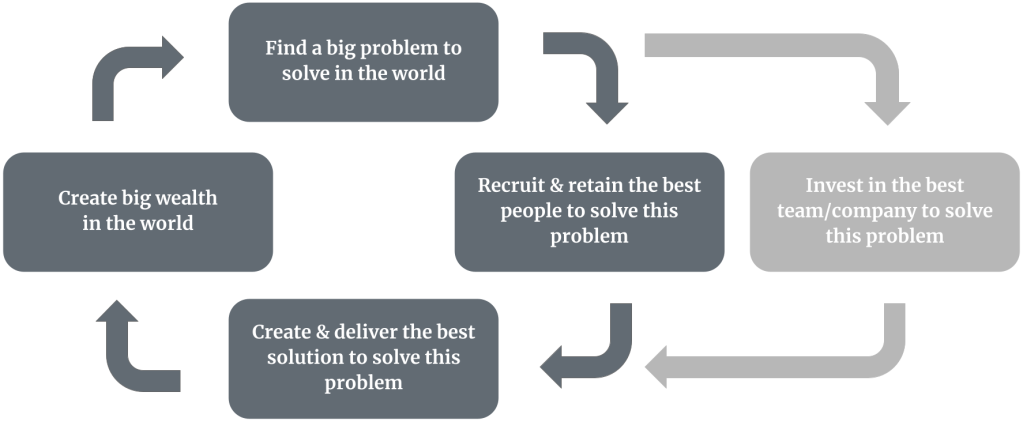Flywheel is a relatively straightforward concept to understand, but still worth reading this book for more practical tips when you’re drafting your flywheels.
Below is an example of a high-level flywheel crafted for entrepreneurs. The inner loop is when founders start a company themselves to solve a big problem and create value.

- Find a big problem to solve in the world: Generally, you want to start with a big (ideally, biggest) problem you can identify that’s worth solving for the world. I’d recommend thinking about the 3-axis of value creation:
1) Are you very good at it
2) Do you enjoy doing it
3) Do a lot of people want it
Because solving a problem well and building an enduring company generally takes 10+ years, think about the each axis as much as possible. - Recruit & retain the best people to solve this problem: This starts with finding your co-founders. You can start solo, but again, it’s not an easy nor a short journey, so having co-founders generally are more helpful. Then you will go find other people who can continue to help your company pursue the mission.
- Create & deliver the best solution to solve this problem: Not only you have to build the best product/solution possible, you’d also need to deliver this to your users/customers efficiently. This phase requires strong & differentiated product, but also repeatable and scalable go-to-market engine for you to create massive value for the market.
- Create big wealth in the world: If you can build a great solution, deliver efficiently to your customers, and have the right business/revenue model, you can create a big wealth in the world. This can be not only hugely beneficial for your customers, but also to your company, to your employees, and to your shareholders.
The outer loop is when a company generates enough profits to be able to invest (e.g. GV, Salesforce Ventures). The outer loop can be separated entirely (as a founder can create a venture capital to invest outside of the loop of the company building) and instead of starting with a thesis or a problem to solve, they can go look for any (or a narrower focus such as B2B) company doing interesting things as well.
In general, the more wealth you generate for the world, the bigger problems you can tackle as you gain greater social capital (e.g. credit & trust) and more people will want to join your mission — whether themselves working for or investing into your company.